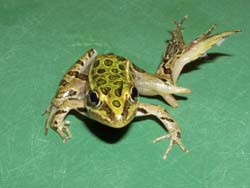Articles and reports from the Life Sciences and chemistry area deal with applied and basic research into modern biology, chemistry and human medicine.
Valuable information can be found on a range of life sciences fields including bacteriology, biochemistry, bionics, bioinformatics, biophysics, biotechnology, genetics, geobotany, human biology, marine biology, microbiology, molecular biology, cellular biology, zoology, bioinorganic chemistry, microchemistry and environmental chemistry.

Discovery Shapes Understanding of how Seeds are Created
Researchers at the University of California, Riverside have identified a protein that helps guide sperm to egg in flowering lily plants, a significant step forward in the field of plant reproduction.
Elizabeth Lord, professor of plant biology and a member of the Center for Plant Cell Biology at UC Riverside, authored the paper titled “Chemocyanin, a Small, Basic Protein from the Lily Stigma Induces Pollen Tube Chemotro

Draft sequence aligned with human genome
The National Human Genome Research Institute (NHGRI), one of the National Institutes of Health (NIH), today announced the first draft version of the genome sequence of the chimpanzee and its alignment with the human genome. All of the data have been deposited into free public databases and are now available for use by scientists around the world.
The sequence of the chimpanzee, Pan troglodytes, was assembled by NHGRI-funded teams led

While Mars can claim some unique features – the largest volcano and the deepest canyon in the solar system – its rocky, dusty, cold landscape has yet to yield signs of the ultimate prize: life.
Three simple words – follow the water – have become the mantra of astrobiologists studying the Red Planet because the presence of water is believed to be a prerequisite for life, either past or present.
But as scientists look for evidence of water on Mars, they are faced with an underlying

For the first time, researchers using laboratory techniques alone and no animal hosts have isolated sex-cell precursors from mouse embryos, coaxed the cells into a sperm-like form, used them to fertilize mouse eggs, and ultimately formed earlystage embryos. The research may offer a breakthrough tool for studies of embryonic cells and gene delivery, potentially helping scientists develop treatments for infertility and providing insight into the growth of certain tumors. The researche

Put a caramel in your mouth and your taste buds detect the sugary substance, instantly sending a message to the brain, which interprets the signal – sweet!
Trying to figure out what happens in the split-second between eating something and recognizing its sweet or bitter flavor – between detecting a taste and a signal reaching the brain – led USC neuroscientist Emily Liman to take a closer look inside the cells in the taste buds.
Her findings reveal new details about how the sense

A historical examination of amphibian deformities – frogs with extra legs growing out of the abdomen, for example – suggests that these aberrations are not a new phenomenon, but part of an emerging disease that could jeopardize the survival of these organisms.
The research, described in the December issue of Conservation Biology, shows that while amphibian malformations and the parasitic worm that causes them have been found in lakes and ponds for more than 50 years, they have substantiall